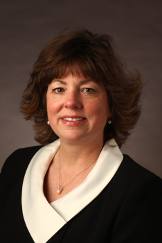
This is the second in a series of guest blog posts by the faculty of the Vanderbilt School of Nursing about the previous night’s episode of Call the Midwife airing on Sundays on NPT and PBS Stations natiowide at 7:00 p.m. Central, September 30-November 4. Check in here every Monday morning for the next six weeks for historical and contemporary context on the show, and some fun discussion. SPOILER ALERT: Some may contain spoilers, so please be aware of that.
“You look awfully young to be a midwife” one of the show’s characters says to the main character Jenny (Jessica Raine) at the beginning of this episode. Those of us in Jenny’s shoes have faced similar assumptions: “you don’t look like a midwife”; “you don’t dress like a midwife”; “midwives are always women, aren’t they?” Funny that nobody mentioned there was a stereotypical archetype one is supposed to fit in order to qualify to be a “proper” midwife. Truth be told, midwives come from all walks of life. Some after having years of nursing experience, others from years of broad life experience. Men, women, older, younger — the one prerequisite isn’t a physical one, it’s metaphysical, and it is that whatever background a midwife comes from, he/she must feel that burning call to walk with women through the phases and stages, ups and downs of women’s lives.
Ok, on to the other meaty content of this episode. Though we are some 55 years out from this series’ moment in time, it was painfully clear that some issues (particularly those involving women’s access to appropriate contraceptive services) have barely gained any progress towards resolution with the passing of time. Whether a 15-year-old prostitute in 20th century London, or a 15-year-old in 21st century Nashville, Tennessee, both have had/would have barriers in trying to obtain contraception. Whether via societal norms that restrict teen’s access to contraception, or by philosophical/religious restrictions that restrict teen’s access to knowledge about contraception, they both inevitably contribute to teen pregnancy rates, and leave young women with little option when unintended pregnancy occurs. Thus when forced with the results of the inability to access appropriate contraception, the young woman faces heart-wrenching options, any one of which will result in her young life never being the same. I don’t know if you felt the same “cold chill” as I did when the priest uttered these words in his gentle chastisement of the young midwife who boldly claims that she “works in the east end and knows what poverty is,” but the show’s writers could not have been more “spot on” when they penned them. “Poverty isn’t bad housing, dirty clothing and familys of ten; poverty is not ever having been loved or even respected. Not knowing the difference between love and abuse…” Could there be a more plain truth?
Michelle Collins PhD, CNM, is an Associate Professor of Nursing, Director Nurse-Midwifery Program, at Vanderbilt University School of Nursing.
Missed our analysis of Episode 1? Read it here.
Missed Episode 1? Watch it online now through December 4.
Bonus video: Behind the Scenes of “Call the Midwife.” Riding Bikes.
Watch Behind the Scenes – Riding Bikes on PBS. See more from Call the Midwife.
